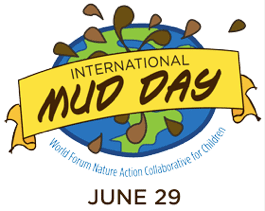Earth Hour – Turn off your lights 3/29 from 8-9pm
March 11, 2008Good resource for educators:
March 25, 2008If you aren’t already a member of the Children and Nature network, sign up here. They send out a great monthly email with information from all over the country and the world. Here’s a sampling:
Children & Nature News and Commentary
March 2008
Children and Nature Movement Finds Allies in
Advocates for Free Play
Free play, creative play, unstructured play ‘¦ no matter the name, the belief that children need time away from the stress and structure of organized sports, enrichment classes, their daily homework, and scripted Xbox scenarios to exercise their imaginations and their bodies is being voiced with greater frequency now.
The American Academy of Pediatrics published a report last year stating that unstructured play is essential for healthy development. Since then, a number of mainstream news outlets, including the New York Times, the Toronto Star, and National Public Radio, have drawn attention to the importance of creative play in children’s lives. At the same time, concerned parents and educators in cities across the country have been organizing into groups to promote free play. And the same is true in Europe and elsewhere.
While connecting with nature is not explicitly prescribed by every advocate for free play, it remains a component of all major communications on the subject, from the PBS documentary Where Do the Children Play? to the Free Play Network’s efforts to promote better play opportunities. Indeed, supporters of the children and nature movement and the free play movement are finding common cause and a shared vision of what makes for healthy childhood development.
To that end, C&NN members are discovering opportunities to work with free play advocates to establish the nature connection where children live and to influence parents, educators, policymakers, and others who can make a real difference in children’s lives. Free play advocates, meanwhile, are turning to outdoor programs and facilities that provide safe places for unstructured play, such as Berkeley’s Adventure Playground, and looking for simple and innovative examples of home environments and neighborhoods that offer children room to roam.
By reaching out and collaborating, the children and nature movement gains valuable allies and access to research, leadership, and experts pointing the way to new solutions and best practices. We also discover real-life examples of communities that let children do the work of childhood ‘” play. Ultimately, we all want happier, healthier children. Could it be, then, that perhaps the best way for us to achieve that is to practice the same skills that children learn while playing among themselves: how to cooperate and collaborate with others, and how to use our imaginations to their fullest?

